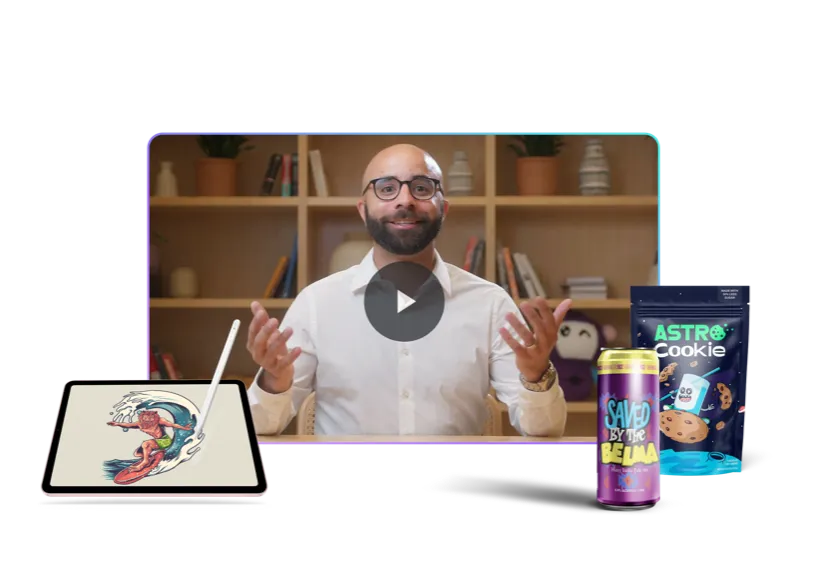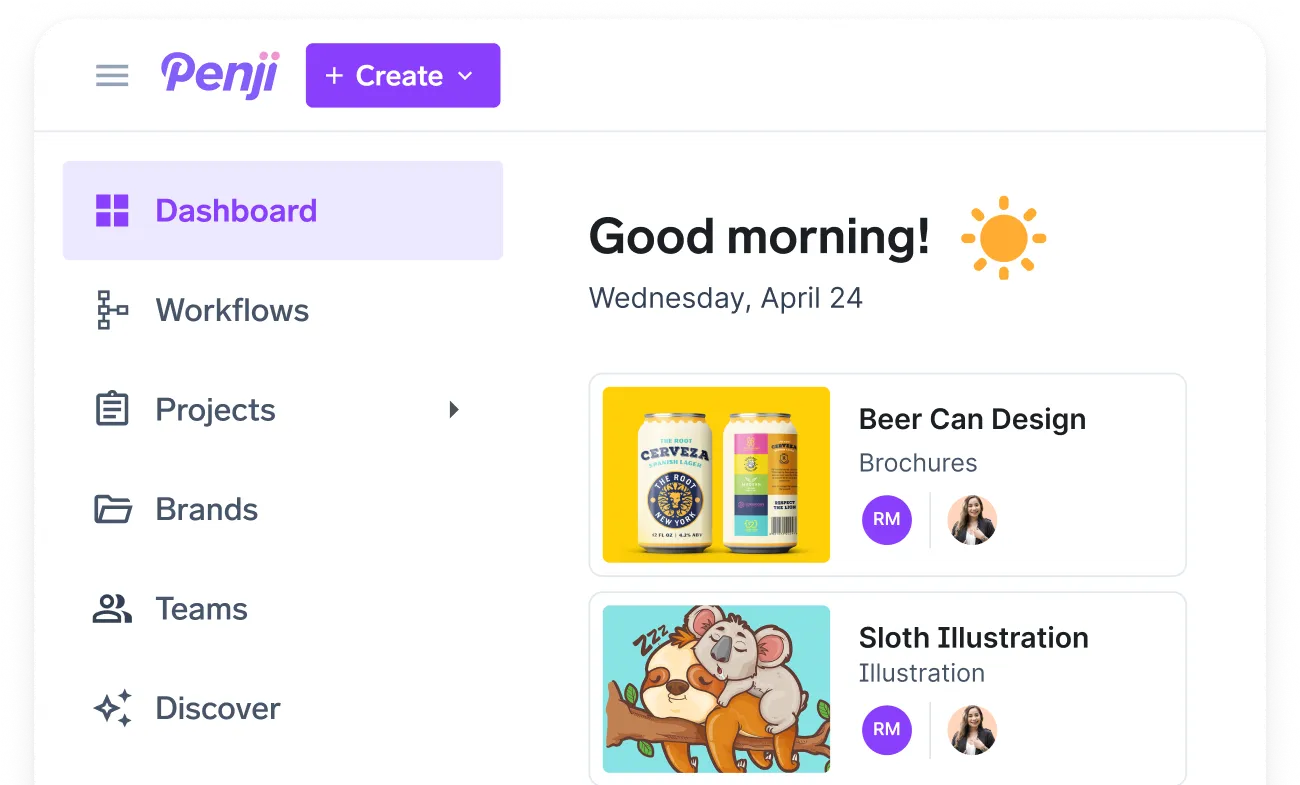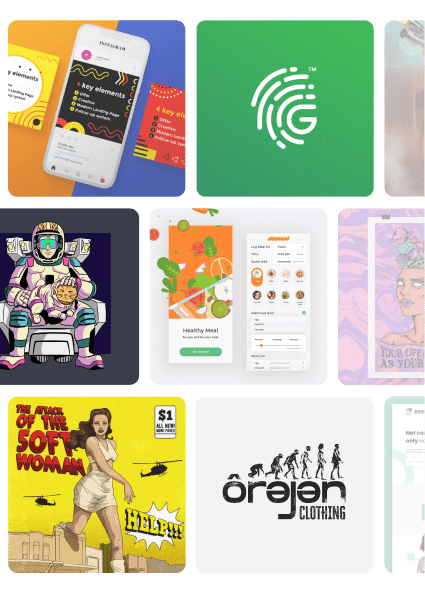![[Fully Managed] Leilani Fallentine and Charly Frisk from Time for Better Ep. 188](https://penji.co/wp-content/uploads/2025/08/BLOG-IMAGE-Leilani-Fallentine-and-Charly-Frisk.jpg)
Cancel or Keep: Quick-Fire Round
Daniela (D): Okay, guys, what is your opinion on standing desks for productivity? Cancel or keep them?
Leilani Fallentine (LF): Keep.
Charlie (C): I’m going to go with cancel.
D: Okay, next one. Counting macros instead of intuitive eating, canceling or keep them?
LF: Canceling that, no.
C: Yeah, intuitive eating. We’re eating what we want.
LF: We’re eating whatever we want here, however many cookies, all that. No macro counting.
C: No.
LF: I love that.
D: Okay, next one. Prescription weight loss drugs like Ozempic, cancel or keep?
C: Cancel, for sure it’s cancel.
D: And the last one. Meditation apps instead of therapy, cancel or keep?
LF: Depends for who and how much you’re willing to spend as well.
C: Yeah, I would say keep just because it does work for some people.
LF: Yes.
C: I would say a combination of both might be great.
LF: Yeah.
C: Yeah, agreed.
Introduction to the Podcast and Guests
D: Guys, welcome to the Fully Managed Podcast. You all know the drill for people watching—this is where we talk marketing and business tips. We assist you guys in your business journeys. You know me, I’m the host, and we have two great guests today: Leilani and Charlie. How are you guys doing today?
C: Doing great. The sun’s shining over here. How are you?
LF: Hello.
D: I’m so excited to have you on the podcast. Where are you guys located?
LF: I am based over in Minnesota. We just had an epic snowstorm yesterday—really kicked off the first day of Earth Month strong. Yeah, calling in from the Midwest.
C: And I’m from San Diego.
LF: Oh, sorry—I’m from San Diego. So quite the opposite side of the spectrum weather-wise. It’s blue skies right now, but we did have a lot of rain last week.
D: What about you? I am—so Penji is based in Philadelphia, but I live in El Salvador. So very far.
LF: That is so cool.
C: I love that. I’ve been wanting to get over there.
Guest Introductions
D: We’re all located in different places, but I am excited to have you guys on the podcast today and talk about great things. To get started, can you introduce yourselves a little bit? Tell us all we need to know.
C: Hello, my name is Charlie. I am originally from Colorado, grew up spending my whole life in the middle of the Rocky Mountains, so I fostered a really deep appreciation for nature early on. I always knew I wanted to do something in the environmental movement, but I was not super sold on the idea of climate change. My community was also pretty skeptical about climate science, and I wasn’t really sure the climate was changing until college. I had a really amazing professor who showed me climate data—but what really got to me was hearing climate stories from people experiencing it on the front lines. Since then, I have devoted my life to climate communication and started working at Time for Better, where I met the phenomenal Leilani about three and a half years ago.
LF: Yeah, thank you, Charlie. I’m Leilani, originally from San Diego, California—born and raised here. I went to school in Utah, so I’ve experienced snow. I studied public relations and got my bachelor’s there. I moved around a bunch and now I’m back home, which is amazing. I live and breathe all things digital media and short-form video. My way into the climate space was a little bit different—I was always into social justice. In college, I was part of a club and helped pioneer a group trip to the Grand Canyon to pick up trash. That opened my eyes to everything going on. I’ve been doing social media management and went to Climate Week, where I met Charlie. It’s an amazing space to be in, and there’s such a need for communication and digital media in climate work.
Micro Communities vs. Large Audiences
D: One of the topics I wanted to ask you about is micro communities and how they’re huge for social media engagement, but also for movements you’re trying to push. What do you think are the advantages of building a micro community versus a large audience?
LF: Especially in climate work and any social justice movement, grassroots is everything. The power of every single voice—it doesn’t have to be a big one—is huge. On social media, people aren’t really listening to someone like Kylie Jenner anymore. They want to hear from real people. Smaller creators are getting the message out more effectively. We led a campaign called Women Leading on Climate where we DM’d almost every person we knew in the climate community. That helped the campaign go viral and get over 41 million impressions. It wouldn’t have happened without those relationships. Those voices are small and mighty—they’re everything.
C: Starting out with your smaller micro community is how you can build a broader movement. It’s all in the relationship building. Time for Better has been building those relationships since the beginning, and those are the people we share information with and involve in campaigns. When you’re ready to launch something bigger, those supporters can help you go from thousands to millions. Investing in those communities is critical.
Reaching People Amid Apathy
D: With any social justice movement, it can feel daunting for a normal person to approach the topic—you can feel powerless. And in today’s youth, there’s also apathy, like “the world is ruined, why try?” Being able to reach smaller communities might feel more impactful. How have you seen social media play into these shifts?
C: My entry into environmental and social justice activism on Instagram happened during college, when George Floyd was murdered in Minneapolis. Leah Thomas posted about how environmentalism is intersectional, and that graphic went viral. There was activism before, but not as much across intersectional lines like racial justice or LGBTQIA+ justice. Social media connects you to people across the world, so you can see the world from their point of view, which you might not get in your physical community.
LF: Personal storytelling is huge in the environmental movement—people talking about what’s happening in their own backyards. Education is also a huge part. I get most of my climate education from social media. There’s false information out there, but it brings awareness. Climate is a scary, multi-faceted subject, and social media can break it down into digestible action steps.
Avoiding Misinformation
D: Social media can be a minefield of noise and misinformation. What do you recommend people do to avoid falling into traps or spreading false information?
C: I wish I’d had more guidance on misinformation when I was younger. Learning the data is important. Use trusted news sources. If you see a strange headline, fact-check it on a site like Snopes. Know your sources and reporters. Also, micro communities are great but can create bubbles, so find ways to step outside of them. Talk to people with different perspectives to sharpen your understanding. The Yale Program on Climate Change is a great resource.
LF: Start by following credible voices—maybe five to begin with—and branch out from there. Question everything. A simple Google search can help verify something. Before you share anything, fact-check it yourself so you don’t contribute to misinformation.
Making Climate Topics Digestible
D: Climate change is a heavy, complex topic. How do you communicate it in a tangible, understandable way on social media?
LF: Our founder and CEO says, “Nobody knows what you’re talking about.” Even if you’re an expert, if you don’t make it digestible, people won’t understand. Start with small, clear pieces. Short-form video is huge—make it fun or trendy, then expand in the caption for those who want more.
C: Organizations take amazing initiatives, but if they can’t communicate them well, audiences won’t rally behind them. Meet your audience where they are. One research-backed strategy is to give people hope—optimism inspires action.
Virality in Climate Content
D: Many brands chase virality, like Duolingo on TikTok. Does that model work for activism and nonprofits?
C: Funny, meme-based content can be effective in the climate movement, but it depends on your audience. One of my favorite campaigns was with the former Canadian environment minister during COP in Azerbaijan. We started with our micro community of climate communicators, who inspired their audiences to share their own stories about women leading on climate. It tapped into inspiration and peer encouragement, and it worked.
LF: That campaign worked because we trusted our partners and influencers to adapt the message for their audience. Relatability is key—people act when they can relate.
Choosing Partners for Collaboration
D: Partnerships are important in this type of work. What’s important when choosing someone to work with?
LF: In-person networking is huge. Being in touch with communities is critical. When you meet someone in person, you can feel their passion, which helps gauge fit.
C: This work is heavy, so finding partners you can build energy with is important. Partnerships with unlikely allies can also be powerful. We once partnered with nuclear energy advocacy groups—controversial at first, but it opened productive conversations.
Closing Remarks
D: That’s a great note to end on. Before we wrap, is there anything you want to plug?
LF: We’re both at Time for Better, a hopeful climate communications agency. We work with climate-focused and other brands to bring optimism to their messaging. Optimism converts best, and everyone needs more of it. If you need help with communications, we’re here. Follow us on Instagram for updates and hopeful messaging.
D: I’ll add the links in the description so people can easily follow you. It was great to have you both on the podcast.
LF: Amazing, thank you so much for having us.
C: Yes, thank you.
D: Guys, I’ll see you on the next episode. Subscribe, like, the whole shebang.
https://www.linkedin.com/in/leilani-fallentine
https://www.linkedin.com/in/charly-frisk














